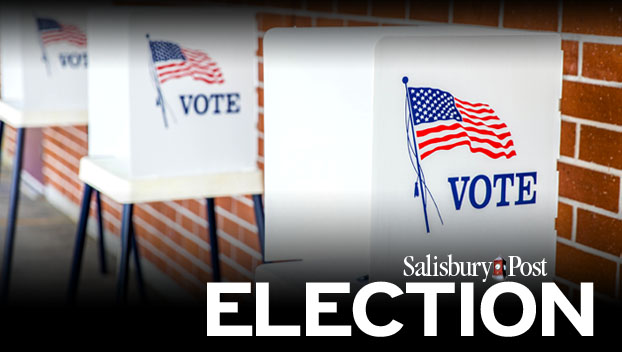In-person early voting begins today
Published 12:06 am Thursday, October 20, 2022
RALEIGH — North Carolina’s in-person early voting period begins today and ends at 3 p.m. Saturday, Nov. 5.
The state has 359 early voting sites, up 17% from 307 sites during the 2018 midterm election.
In-person early voting, also known as “one-stop early voting,” is the most popular method of voting in even-numbered election years in North Carolina. In the 2020 general election, for example, 65% of voters cast their ballot in-person during the early voting period.
“The 100 county boards of elections have spent months preparing for the start of in-person voting for the important 2022 general election,” said Karen Brinson Bell, executive director of the State Board of Elections, in a news release. “The bipartisan election officials who work in each early voting site are prepared for a smooth voting process and to ensure the ballots of all eligible voters are counted.”
The state board offers the following 10 tips for early voters:
Voters may cast a ballot at any early voting site in the county where they are registered to vote. You can see a list of sites at https://vt.ncsbe.gov/OSSite/
Sample ballots for the primary election are available through the Voter Search tool. For more information on candidates for the N.C. Supreme Court and N.C. Court of Appeals, see the State Board’s Judicial Voter Guide 2022: Midterm General Election. The state board does not provide information about candidates for other contests.
Individuals who missed the regular voter registration deadline on Oct. 14 may register and vote at the same time during the early voting period. Same-day registrants must attest to their eligibility and provide proof of where they live. For more information, visit Register in Person During Early Voting. This is the only option for individuals who missed the regular registration deadline to be able to register and vote in the general election.
When you check in to vote at an early voting site, you may update your name or address within the same county, if necessary.
Voters who receive an absentee ballot by mail may deliver their completed ballot to an election official at an early voting site in their county. Ballots will be kept securely and delivered to the county board of elections for processing.
Voters who requested an absentee-by-mail ballot but have not yet returned it may choose instead to vote in person during the early voting period or on Election Day, Nov. 8. Voters may discard the by-mail ballot and do not need to bring it to a voting site.
Under state law, all early votes — by mail and in person — are considered absentee votes because they are cast “absent” of Election Day. You can see that your early vote counted in the “Your Absentee Ballot” section of the Voter Search database. Type in your first and last names to pull up your voter record. Scroll down to the “Your Absentee Ballot: By Mail or Early Voting” section. Once your ballot is received by your county board of elections, “Absentee Status” will show “Valid Return,” the “Return Method” will be “In Person” and your “Return Status” will be “Accepted.” Your ballot status also will show up in the “Voter History” section of your voter record as soon as your county completes the post-election process of compiling the information on who has been recorded as having voted during the election through the various voting methods. This may take a couple of weeks or longer.
The state board asks that all voters respect the rights of others to participate in the election. Intimidating any voter is a crime. Voters who feel harassed or intimidated should notify an election official immediately.
Voters at one-stop early voting sites are entitled to the same assistance as voters at a voting place on Election Day. Curbside voting is available for eligible individuals at all early voting sites.
North Carolina law prohibits photographing or videotaping voted ballots. Voters may use electronic devices in the voting booth to access a slate card or candidate information, provided they don’t use the devices to communicate with anyone or take photographs of their ballot.





